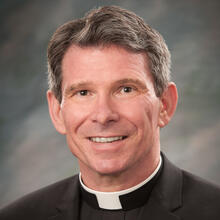In his notes, the famous doctor wrote:
The psychiatrist was the eminent William Rivers, a fellow of St. John’s College, Cambridge, noted for his pioneering work in anthropology, neurology and psychology, most notably, with soldiers suffering from post-traumatic stress disorder, though, in the First World War, they were referred to as the “shell-shocked.”
The patient was equally famous, the poet Siegfried Sassoon. He had been sent to Craiglockhart, a military hospital in Scotland, for evaluation and therapy in the summer of 1917. More interesting than psychiatrist or patient, however, is the pathology, which Sassoon recorded in his memoir. The poet asked Dr. Rivers if he thought that he was suffering from shell-shock, as his superiors had claimed.
As his biographer Jean Moorcroft Wilson notes, even as Siegfried Sassoon (2013) entered treatment, the commander of the British Expeditionary Force, Field Marshal Douglas Haig was preparing to launch the Third Battle of Ypres. No lasting tactical advantage was gained at Passchendaele, as it came to be known, though the British sacrificed nearly a quarter of a million men in the offensive.
Siegfried Sassoon was a decorated combat officer. He had single-handedly captured a German trench in the Hindenburg Line. His “pathology” developed during a convalescent leave. Encouraged by pacifist friends, such as Bertrand Russell and Lady Ottoline Morrell, Sassoon declined to return to duty, sending a letter to his commanding officer entitled Finished with the War: A Soldier’s Declaration. It was forwarded to the press and read out in the House of Commons by a sympathetic member of parliament.
Many viewed the letter as treasonous, but how could the government arrest the noted poet? He was a decorated war hero and the Marlborough and Cambridge-educated member of a wealthy family. Hence the hospitalization and the diagnosis. His Majesty’s Government couldn’t be mistaken about the Great War, the one that promised to end all wars. So Sassoon had to be sick, seeing the world wrongly. But how can there be such disagreement, over what is clearly seen?
Christmas proclaims the Christ born in Bethlehem, but Epiphany reminds us that faith alone can access his glory, see his shine.
The Law and the Covenant aren’t necessary. Magi from the east come to do him homage. But note that they are Wise Men, which is to say, they have learned to look for God. St. Thomas Aquinas would say that they nurtured the virtue of faith. They have acquired a habit of the mind, a strength, which makes the intellect assent to things that appear not. Put another way, they see the Christ because they have learned to look for the Christ.
We tend to think that all knowledge is self-evident, that anyone can see what’s what. St. Thomas would remind us that knowledge cultivated is knowledge increased and intensified. Just as an architect or an engineer sees what we do not, so too, the one who practices faith, who regularly assents to the mystery, sees the mystery in greater depth. Saints see more than we do.
One could put all of this in personal terms. Lovers see more than others, because love grants access, intimacy. We have seen his glory, but only because we looked with eyes of faith. We can still see more, if our faith deepens through practice.
By 1917, the poet had lived through hell on earth. He had seen young men ground into the mud. Why were he, and so many others on the front lines, seeing what others could not? Quite simply, because they wanted to, and having so desired, they had learned to look. The same is true of us, looking upon the Christ Child.
Isaiah 60: 1-6 Ephesians 3: 2-3a, 5-6 Matthew 2: 1-12








